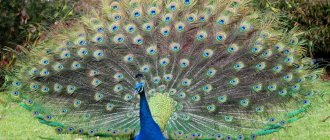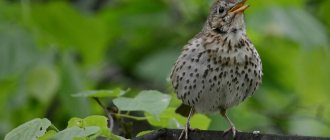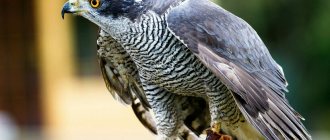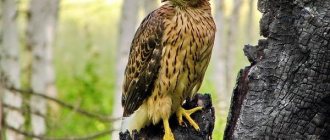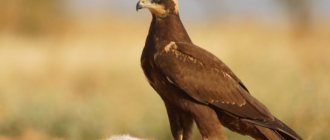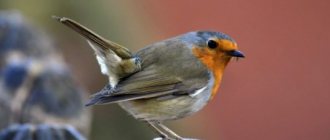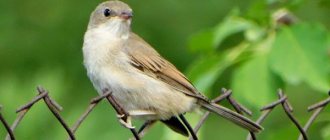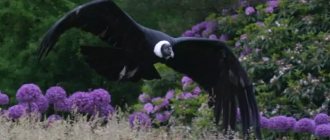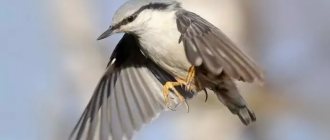In most cases, birds living in the forests and steppes of Russia and the world have a protective coloration. Brown or greenish plumage allows these representatives of the fauna to become invisible among the branches of trees or grass. But sometimes in nature you can see brightly colored birds. Birds with red heads, for example, look very impressive. Such bright spots also usually serve as protection for birds. Appearing suddenly before the eyes of a predator, they confuse him. As a result, the potential victim can gain time and escape.
List of birds with red head feathers
In our country, unfortunately, there are not so many owners of such bright jewelry. Basically, red spots on the head can only be seen in birds such as:
- green woodpecker;
- black woodpecker;
- common tap dance.
There is also a bird with a completely red head that lives in Russia. It belongs to the group of waterfowl. This duck is called the red-headed duck.
Most often, brightly colored birds are found in nature in the tropics. For example, the red-capped pipra, which lives in South America, looks very impressive. Some representatives of such bright decorations are widespread in the tropics. Others number only a limited number of individuals. The last group of birds includes, for example, Bockermann's manakin, recently discovered by zoologists, living exclusively on the Ararip Highlands in Brazil. This bird has a snow-white body color and sports a scarlet helmet.
Bird conservation
As mentioned above, in the post-Soviet space the green woodpecker is listed in the Red Book. It is worth saying that the number of these birds is falling everywhere due to human economic activity. The area of oak forests is decreasing, the surrounding nature and ecological situation are changing, and the food supply is decreasing. In Russia, the reduction in forest area, for example, has led to a massive migration of birds from the southern regions of the country (Volgograd) to more northern ones (Saratov).
Come again
Listen to the voice of a green woodpecker
The audio tag is not supported by your browser. Close
Green woodpecker: description and distribution area
In Russia, this representative of birds lives only in the European part. In the east, its distribution area is limited to the Volga Valley, in the north - to the Gulf of Finland. The largest populations of green woodpeckers are recorded in Germany, France and Spain. Most often this bird is found in deciduous forests, parks and gardens.
The main distinguishing features of these birds are the olive-green plumage of the body and wings, as well as a narrow bright red cap on the head. Under the beak of this species of woodpeckers there is a dark stripe resembling a mustache. The front part of the head of these birds is black and against the background of green cheeks and a red cap it looks like a spectacular mask.
These birds scream all year round. The voice of both females and males of the green woodpecker is sharp and quite shrill. Many people who have heard the singing of these birds compare it with laughter or squealing. This woodpecker rarely chisels trees. However, like ordinary representatives of the species, it almost never produces trills when searching for food in wood.
Description of the black woodpecker
This red-headed bird is common throughout Russia. The black woodpecker is also found in many other countries of Europe and Asia. It is distinguished from other members of the family by the charcoal coloring of the feathers of the body and wings, as well as the bright red cap on its head. This feathered forest inhabitant is quite large in size.
Compared to other woodpeckers, this is one of the largest species. This large bird with a red head weighs about 500 g. The wingspan of the black woodpecker is 70-80 cm.
The beak of this representative of birds is very strong. If desired, a bird can easily break through even hard wood of pine, spruce or cedar. Therefore, the black woodpecker, unlike the green one, lives not only in broad-leaved forests, but also in coniferous forests.
One of the features of this interesting and beautiful bird is that it is practically not afraid of humans. On the contrary, some individuals often show great curiosity towards people who come to the forest. Such woodpeckers can spend hours watching mushroom pickers and hunters, following them and flying from branch to branch.
Despite the presence of a bright cap, it can be quite difficult to notice a black woodpecker among the foliage. This bird can be detected mainly only by the loud trills it produces when extracting worms from wood.
Lifestyle
Although green woodpeckers belong to the woodpecker family, they can hardly be called forest orderlies. They prefer deciduous forests, groves with open areas, and parks. Almost never found in mixed and coniferous forests. A place to live should have secluded corners for building a nest and resting. A prerequisite is the presence of several large anthills nearby. Ants are the mainstay of its diet.
Red-capped birds love privacy and live very secretively. These qualities are especially pronounced during the mating season and when raising chicks. The green woodpecker can attract attention only in March-April, when it arranges mating games, talking loudly with its partner in a pair. As a rule, green woodpeckers live separately and pair up only during the mating season. Birds love silence, practically not filling the forest with singing or screams. They make communication sounds only when breeding. The flight is smooth and undulating.
The habitat becomes a hollow in a tree with soft and rotten wood. Birds can live there for decades. The green woodpecker is a homebody; it does not have a particular passion for changing places and does not fly more than 5 km from the hollow. If a tree with a hollow falls from old age, the birds make a new home, but it is always located not far from the old one.
Hollowing out the hollow lasts 2-4 weeks. For this, a suitable tree with soft wood is selected. This is usually beech, poplar or aspen. The tree must be old and have a rotten core. The male does the main work of building the home, although the female also actively helps him. The height of the new house is from 2 to 10 meters above the ground. Birds are fans of comfort, so the bottom of the hollow is always lined with wood dust.
Photo of a green bird
Common tap dance
This mottled forest bird is also distinguished by the presence of a red spot on its head. True, the dimensions of the latter are not too large. The common tap dance lives in the tundra and forest zones of Russia, America and Europe. This representative of birds is sometimes found in Asia.
This small bird weighs only about 15 grams. It feeds on plant seeds - mainly alder, pine and birch. The upper body of the common tap dancer has a grayish-brown color with mottled spots. The underparts of these birds are white. Like the back, it is covered with large streaks. In females, only the cap itself is red. Males also sport a crimson breast. The common tap dancer also has several black feathers on its tail.
The voice of this small bird with a red head, resembling the size of a sparrow, is very clear. Moreover, her “pee-pew” and “even-even” can be heard almost continuously. These birds are not only noisy, but also very nimble. In this regard, they easily compete with their common neighbors - tits and siskins - jumping from branch to branch, and sometimes hanging upside down in order to reach food.
Reproduction and lifespan
During the mating season, the trills of males become especially loud and melodic. The groom puffs up his tail, sticks out his red chest, shows his girlfriend first his left side, then his right, turning and flapping his wings.
Having formed a pair, the female begins to build a cup-shaped dense nest on a low tree or in the upper branches of bushes, and the future father helps her. The clutch consists of 3-4 eggs, which have a greenish or bluish tint interspersed with gray or brown.
While the female incubates the clutch, the male entertains her with songs, and she sometimes quietly sings along. He feeds his chosen one, bringing insects and seeds. He drives away other birds with loud chirping and selflessly protects the nest from attacks by predators. Occasionally, the mother may leave the nest, then the male sits on the clutch.
After 12-14 days, the chicks appear. Their parents feed them exclusively insects. Around the 17th day, the chicks leave their father's nest, after which the female begins the next clutch, and the male feeds the previous offspring.
In their natural environment, red cardinals live from 10 to 15 years. In captivity, with proper maintenance, their life expectancy can increase to 30 years.
Red-headed Pochard - what kind of bird?
This representative of the bird family lives mainly in the temperate latitudes of Central Russia and Siberia. This red-headed waterfowl is somewhat smaller in size than the mallard. An adult weighs approximately 700-1000 grams. The red-headed duck belongs to the group of migratory waterfowl. The wings and body of this duck are light gray, the tail and breast are black, and the head is red-brown.
This representative of birds feeds mainly on plant foods. The red-headed duck builds nests in both moderately moist and dry places. In Russia, this duck is considered a valuable game bird.
Kinds
The genus of starlings includes more than 10 species of birds with similar lifestyles. The pink starling is one of them. It is sometimes confused with a close genus of the Brahman relative, which is distinguished by a light brown color with a reddish tint, patches of skin without feathers behind the eyes and more rounded wings.
Both species are similar in lifestyle, but the Brahman relative can more often be seen near human habitation.
Red-capped pypra
These spectacular little birds in South America can be found mainly in the tropical forests of Costa Rica, Mexico, Panama and Colombia. The red-capped pypra feeds mostly on fruits. Sometimes this bird also eats plant seeds. An interesting feature of pipra is that any food is digested in its stomach in literally 15-20 minutes.
The color of this representative of tropical birds is black. Against the background of the body, tail and wings, their red head therefore looks very bright and impressive. In terms of their lifestyle, these birds are quite reminiscent of domestic tits. They live in small families and love to flutter between the branches of trees and bushes.
The voice of this forest bird with a red head is quite clear. Pipra “sings” often. The male of this bird, for example, periodically makes short sounds reminiscent of “psit,” thus marking a tree chosen as its own territory. Pipra females are also quite noisy.
Features of character and lifestyle
Photo: Red cardinal in winter
Red cardinals are not migratory, but are year-round residents throughout their range. They are active during the day, especially in the morning and evening hours. During the winter, most cardinals flock and live together. During the breeding season they are quite territorial.
Red cardinals prefer a secluded place where they feel safe. The type of areas that provide excellent coverage are dense vines, trees and shrubs. There are many types of trees and shrubs that red cardinals are drawn to for nesting purposes. Planting shrubs such as grapevine, honeysuckle, dogwood and juniper can provide ideal cover for their nests. In winter, evergreen trees and shrubs provide safe and adequate cover for these non-migratory birds.
Red cardinals do not use birdhouses for nesting. Instead, the male and female will look for a densely covered nest a week or two before the female begins to build one. The actual location tends to be where the nest is wedged into a fork of small branches in a shrub, sapling, or tangle. The nest is always hidden in dense foliage. The most common trees and shrubs selected by red cardinals include dogwood, honeysuckle, pine, hawthorn, vine, spruce, hemlock, blackberry, rose bushes, elms, elderberries and sugar maples.
Fun fact: Female red cardinals are responsible for nest building. They usually build nests from twigs, pine needles, grass and other plant material.
Once a location is chosen, the male usually brings nesting materials to the female. These materials include strips of bark, coarse thin twigs, vines, grasses, leaves, pine needles, plant fibers, roots and stems. The female crushes the twigs with her beak until they become flexible, and then pushes them with her paws, creating a cup shape.
Each nest has four layers of rough twigs that are covered with a leaf mat, lined with vine bark, and then trimmed with pine needles, grasses, stems, and roots. Each nest takes up to 10 days. Red cardinals will only use their nesting site once, so it is important to always have plenty of trees, bushes and materials nearby.
Waxwing bird
This representative of birds, distributed throughout Russia, has a very attractive appearance. The red color on the waxwing's head is localized mainly in the cheek area, spreading slightly to the forehead, and sometimes even to the crest. The body of this bird has a gray-pink tint. Black glasses are clearly visible around the eyes of the waxwing. Dark feathers also grow under its beak, on its wings and on its tail.
This bird, well known to many, is small in size - about 20 cm. Part of the length falls on the tail. Waxwings do not sing often. And they do it, in the opinion of many nature lovers, not very well. These small birds live mainly in mixed, birch or coniferous forests. In winter, these birds sometimes fly to cities. Waxwings feed on berries and fruits.
About birds living next to humans. Part two
Hollow nesting birds
Of all the birds, hollow-nesting birds are the easiest to attract to a personal plot. This group of birds nests in hollows hollowed out by woodpeckers or formed as a result of rotting wood; they also build their nests behind the peeling bark of dry trees, in uprooted roots, and woodpiles.
Common starling
Audio: Adobe Flash Player (version 9 or higher) is required to play this audio. Download the latest version here. In addition, JavaScript must be enabled in your browser.
The common starling has black plumage with a shiny metallic tint, a brown tail and wings. In autumn, the starling's plumage changes; white specks appear on it; young birds have lighter plumage on the throat. Starlings of this group settle near villages and villages. The common starling often finds food on the ground, sometimes in trees.
Nests are organized in tree hollows, birdhouses or nest boxes. Eggs are laid in mid-spring (May-April). Clutch - 5–7 blue eggs. Birds feed on various insects, most of which are pests of our gardens (garden cutworms, beetles, click beetles, cabbage weeds). It is estimated that the starling, while feeding its chicks, destroys up to 8 thousand May beetles and their larvae.
Pastor
Audio: Adobe Flash Player (version 9 or higher) is required to play this audio. Download the latest version here. In addition, JavaScript must be enabled in your browser.
The head, neck, tail and wings of the pink starling are black with a metallic tint, the rest of the plumage is pink. Young individuals have lighter plumage. An adult bird has a crest on its head. This is a migratory bird inhabiting the south of Russia. Nests are made in rock voids, cliff crevices, and woodpiles. Egg laying occurs in May-June and consists of 4–6 blue eggs.
The pink starling actively destroys locusts and other insect pests. For breakfast alone, the pink starling requires up to 50-60 locusts; per day it eats up to 200 large insects.
gray starling
The plumage of this species of starling is gray, the upper body, sides of the head and abdomen are white, the neck and back of the head are black, and the base of the beak is bright yellow. The plumage of males is brighter; the plumage of young individuals is reddish.
The gray starling is a migratory bird that lives in mixed forests and groves and lives in flocks. Egg laying in May-June, consists of 4-8 blue eggs. A picture familiar from childhood: a tractor working in a field and starlings chasing it through fresh plowed land. The gray starling's menu consists mostly of insect larvae and earthworms.
House sparrow
Audio: Adobe Flash Player (version 9 or higher) is required to play this audio. Download the latest version here. In addition, JavaScript must be enabled in your browser.
The female and male house sparrow have different plumage. The male has a gray head, a black throat and upper chest, a whitish belly and stripes on the shoulders, and a brown stripe running from the beak through the eye. The female and young birds have brownish-gray plumage, lighter on the lower part of the body. There are light and dark variegated patches on the back.
The house sparrow lives throughout almost the entire forest zone of Russia. Settles in cities and villages. It nests in crevices of buildings, under the roofs of houses, birdhouses, and in burrows on the slopes of ravines.
Laying occurs in April–July and consists of 5-6 eggs, white or grayish-blue with brown spots.
House sparrows feed their chicks with insects, mites, and arthropods; the diet of adult birds is supplemented with seeds of various weeds.
tree sparrow
Audio: Adobe Flash Player (version 9 or higher) is required to play this audio. Download the latest version here. In addition, JavaScript must be enabled in your browser.
The tree sparrow is smaller than the house sparrow. The plumage of the back, wings and tail is brownish-brown, there are brown spots on the back, and a chestnut-brown “cap” on the head. The sides are white, the chest and belly are whitish, the throat is black, and there is a black spot on the cheeks. Females and young birds are similar in color, but slightly lighter.
The tree sparrow lives throughout Russia. During the nesting period it sticks to tree plantations, the rest of the time it prefers outbuildings and farmyards.
It makes nests in hollows, under the roofs of houses, and in birdhouses. Egg laying occurs in April–July and consists of 4–8 whitish or grayish eggs with dark speckles.
The chicks are fed with small beetles, spiders, hymenoptera and other insects. The diet of the first brood chicks consists of sawfly weaver larvae, pine sawfly larvae, and elm springtail caterpillars. Various beetles are added to the food composition of the second brood chicks, reaching up to 80% of the total food mass.
Observations show: sparrows feed their chicks about 26 times within an hour, that is, on average 300 times per day. In 15 days, parents fly to the nest 4500 times.
Jackdaw
Audio: Adobe Flash Player (version 9 or higher) is required to play this audio. Download the latest version here. In addition, JavaScript must be enabled in your browser.
The jackdaw has a gray top of the head and neck, the rest of the plumage is black with a metallic sheen on the back and shoulders. The jackdaw lives mainly in the European part of Russia and the southern regions of Siberia. Jackdaws stay in flocks. This is a bird familiar to villages and villages. Jackdaws love to nest under the roofs of residential buildings, in hollows, chimneys, and in burrows.
The jackdaw lays a clutch of 4–6 bluish-green and brown-speckled eggs in April-June. This is an omnivorous bird; it feeds its chicks with various invertebrates and the larvae of large beetles. Even small rodents can become its food. Jackdaws love leaf beetles, ground beetles, elephant beetles, darkling beetles, click beetles, and beetles. The rest of the food consists of plant foods: peas, oats, lentils.
Blue tit
Audio: Adobe Flash Player (version 9 or higher) is required to play this audio. Download the latest version here. In addition, JavaScript must be enabled in your browser.
The blue tit's forehead and cheeks are white, the throat, stripe on the chest and around the cheeks are black, the chest and belly are yellow. There is a blue “cap” on the head, blue plumage on the wings and tail, and a green back.
Lives in the central and southern regions of Russia. The blue tit settles in deciduous gardens. This is a sedentary and nomadic bird. It makes nests in tree hollows. The eggs of the blue tit are white with red-brown spots; the blue tit lays them in April-May. The clutch consists of 5–10 eggs.
The blue tit's food mainly consists of insects, and less often - vegetation. The blue tit feeds its chicks with weevils and their larvae, bugs, butterfly caterpillars, small dipterans and membranous spiders. In huge numbers, the blue tit destroys the main pests of gardens and forests: gypsy moths and centipedes.
The singing period is mid-March to mid-July; they rarely sing in the fall.
Brown-headed Chickadee
Audio: Adobe Flash Player (version 9 or higher) is required to play this audio. Download the latest version here. In addition, JavaScript must be enabled in your browser.
The back, wings and tail of the chickadee are brownish-gray, the top of the head and the spot under the beak are brown. Settles in coniferous and mixed forests. Nests in hollows.
White eggs with red-brown spots are laid in April-June. The clutch consists of 7-8 eggs. With the onset of cold weather, they fly to household plots in search of food.
This is an insectivorous bird that destroys a large number of pests. Chickadees feed mainly on beetles, caterpillars, pupae of moths, cutworms, and leaf rollers. While feeding the chicks, the chickadee flies up to the nest up to 20 times within an hour.
Singing begins in late January-early February and ends in late spring.
Tufted tit (grenadier)
Audio: Adobe Flash Player (version 9 or higher) is required to play this audio. Download the latest version here. In addition, JavaScript must be enabled in your browser.
This tit received this name because of the large whitish, pointed crest on its head with black transverse stripes. The plumage of the back, wings and tail is grayish-brown, the throat and stripes above the eye are black. The body is white with a brownish coating.
The tufted tit lives in the pine forests of the European part of Russia. In winter, it visits home gardens, looking for food on the lower branches of trees. The tufted tit feeds on insects and spiders. Loves weevils, leaf beetles, click beetles, and sometimes uses plant seeds for food.
Tufted tits make nests in hollows with very narrow holes (no more than 30 mm in diameter). Such hollows are usually located very low, almost close to the ground.
Singing begins in February-March, more often at the end of winter and summer.
Great tit
Audio: Adobe Flash Player (version 9 or higher) is required to play this audio. Download the latest version here. In addition, JavaScript must be enabled in your browser.
This is the largest of all tit species. The plumage of the head, throat, stripes on the yellow chest, and the undertail are black. The wings and tail are bluish, the back is green or yellowish-gray, the cheeks and the spot on the back of the head are white.
Lives in most of Russia. Likes to settle in thickets along river banks. The nest is made in a hollow. White eggs with red-brown spots are laid in March–June. The clutch consists of 9–13 eggs.
Like all tits, it finds food on trees and bushes. It prefers animal food; in winter it also eats plant food. The great tit eats as much food per day as it weighs.
Regular singing begins at the end of February.
Common redstart (coot)
Audio: Adobe Flash Player (version 9 or higher) is required to play this audio. Download the latest version here. In addition, JavaScript must be enabled in your browser.
The plumage of the male and female coot is somewhat different. The male's top of the head, neck and back are ash-gray, the forehead is white, the sides of the head and throat are black, the lower body and tail are bright red. The female also has a red tail, an ocher-white belly, and the rest of the plumage is brownish-gray. Young birds have brown plumage with light streaks and a red tail.
The common redstart lives in the European part of Russia and the south of Western Siberia. Redstart nests can be seen in rock cracks; redstarts also like to settle under the roofs of residential buildings and titmice. Redstart eggs are white or pale blue. The clutch consists of 4–6 eggs.
The bird feeds its chicks and feeds itself on insects. The coot has different hunting methods; in search of food, it can run on the ground like a wagtail, catch insects in the air like a flycatcher, and collect food on tree branches and bushes like a warbler or tit.
Pied Flycatcher
Audio: Adobe Flash Player (version 9 or higher) is required to play this audio. Download the latest version here. In addition, JavaScript must be enabled in your browser.
The male flycatcher has a black top of the head and neck, back, wings, and tail, a narrow stripe on the forehead, stripes on the wings, the forehead and the underside of the body are white. The plumage of young birds and females is grayish-brown.
The pied flycatcher lives in the European part of Russia and the south of western Siberia. It builds nests in hollows. Eggs are laid in May-June; the eggs are light blue in color; the clutch consists of 5–7 eggs.
The pied flycatcher feeds on flies, butterflies, weevils, click beetles, click beetle larvae, beetles, leaf beetles, tree bugs and other insects.
Gray flycatcher
Audio: Adobe Flash Player (version 9 or higher) is required to play this audio. Download the latest version here. In addition, JavaScript must be enabled in your browser.
The gray flycatcher has a brownish-gray upper body, tail, and wings; there are longitudinal brown streaks on the head and back. The underside of the body is white with a brownish coating and streaks on the crop and chest.
The gray flycatcher inhabits the entire European part of Russia and the south of Eastern Siberia. It makes nests at the base of thick branches behind loose bark or in hollows, and also settles under the roofs of houses. A clutch of 4–6 greenish eggs with rusty spots is laid in May-June.
The gray flycatcher catches insects in flight. She can eat up to 450 flies per day. This is an extremely unpretentious bird; sometimes two pairs can simultaneously live in different corners of the same nesting area. The gray flycatcher is very easy to attract to the site.
Moskovka
Audio: Adobe Flash Player (version 9 or higher) is required to play this audio. Download the latest version here. In addition, JavaScript must be enabled in your browser.
The head and upper chest of the Muscovy are black, the cheeks, the spot on the back of the head and the chest have white plumage. The back is gray with an olive-blue tint, the wings and tail are brownish-gray, the belly and sides are white with an ocher tint. This is a small bird.
Muscovite settles in coniferous and mixed forests throughout Russia. Birds often live in flocks together with tits. When not nesting, it flies to villages and villages, destroying insect pests in gardens and vegetable gardens. The Muscovy makes its nests in hollows.
The Muscovy feeds mainly on insects, but in winter its diet is replenished with tree seeds, mainly conifers. Loves beetles, caterpillars, lepidopteran pupae, spiders, small worms, weevils, pine hawk moths.
Starts singing in February.
White wagtail
Audio: Adobe Flash Player (version 9 or higher) is required to play this audio. Download the latest version here. In addition, JavaScript must be enabled in your browser.
The wagtail has black plumage on the top of the head, the back of the head, the crop, the top of the breast and the tail, the back is gray or black, the forehead, the strip from the beak through the eye to the ear, the stripes on the sides of the tail and on the wings and the entire underside of the body are white. Young wagtails have gray plumage without black spots.
Wagtails settle in floodplains of rivers and other bodies of water. This is a bird familiar to home gardens. It stays on the ground all the time, running alone, less often in pairs. Nests are built in hollows, under the roofs of houses, in niches in cliffs and in rock cracks.
The wagtail's eggs are white with gray spots; the wagtail lays them in April–July. The clutch consists of 5-6 eggs.
The area where the wagtail searches for food is quite large; in search of food, the bird flies 200-300 meters from the nest.
The white wagtail feeds only on animal food: flying insects, spiders, weevils, and beetles. The wagtail is of great benefit in the garden, where this bird quickly runs around the beds in search of prey. Wagtails do not like tall grass; they are more attracted to paths, paths, and weed-overgrown boundaries.
They sing rarely - only at the beginning of the nesting period.
Nuthatch
Audio: Adobe Flash Player (version 9 or higher) is required to play this audio. Download the latest version here. In addition, JavaScript must be enabled in your browser.
The upper side of the body of this bird is grayish-blue, the wings and tail are brownish-black. There is a black stripe from the beak through the eye to the ear, white spots on the tail, white throat, white chest and belly with a reddish tint.
The nuthatch inhabits forests almost throughout Russia. The nuthatch climbs tree trunks and sometimes joins flocks of birds. Usually leads a nomadic life. Nests are built in hollows; the entrance to the hollow is coated with clay to reduce its size.
The nuthatch lays eggs in April–June. The clutch consists of 6–8 white eggs with red-brown speckles.
The nuthatch's food consists of insects (leaf beetles, bugs, moth caterpillars, butterflies, etc.) and tree seeds (hazelnuts, acorns, maple seeds, alder seeds, coniferous trees).
In private plots, the nuthatch can settle in birdhouses and titmouses hung at a height of 4–8 meters; it prefers nest boxes. At its nesting site, the nuthatch does not tolerate its fellows, while it does not pay any attention to other cavity nesters; for example, it can live in a colony of starlings.
The nuthatch begins to sing regularly towards the end of winter; by the beginning of incubation, the singing stops.
Hoopoe
Audio: Adobe Flash Player (version 9 or higher) is required to play this audio. Download the latest version here. In addition, JavaScript must be enabled in your browser.
A bird with a beautiful large fan-shaped crest. The plumage of the hoopoe is brick-reddish, the abdomen is light, the wings are black with wide white stripes, the tail and stripe on the crest are black, the base of the tail is white.
The hoopoe loves open spaces, lives in the southern regions of Russia, and can also be found in the Moscow region. It makes nests in hollows, piles of stones, rock crevices, and cliffs. Lays a clutch of 3–9 in May-June, the eggs are grayish in color. It finds its food on the ground and feeds on various invertebrates.
Kestrel
Audio: Adobe Flash Player (version 9 or higher) is required to play this audio. Download the latest version here. In addition, JavaScript must be enabled in your browser.
The kestrel is a small falcon. It has wide wings and a long tail. The upper body of the kestrel is reddish-brown with round streaks, the lower body is ocher-colored with longitudinal streaks, the head is gray, and there is a dark stripe at the end of the tail. Young birds have lighter plumage with blurred streaks.
Settles throughout Russia except the tundra. A common bird in villages and villages. Nests in hollows, attics, old nests of crows and rooks. The clutch is laid in April-May; it consists of 4–6 ocher-colored eggs with red-brown spots.
The kestrel's food is small rodents and large insects (locusts, grasshoppers, etc.).
In the central regions of Russia, kestrels making their nests in attics are a common occurrence.
Little owl
Audio: Adobe Flash Player (version 9 or higher) is required to play this audio. Download the latest version here. In addition, JavaScript must be enabled in your browser.
The plumage of the little owl is monochromatic with light specks ranging from light brown to reddish-sand color. The little owl lives in the southern regions of Russia; it makes nests in burrows, which it often digs itself, making them quite deep. He also likes to live in attics in abandoned buildings.
Lays eggs in April-May. The clutch consists of 4–8 white eggs. The little owl's food is small rodents; on occasion it can also catch small birds; it loves lizards and large insects.
The little owl actively exterminates mouse-like rodents, so it must be attracted to garden plots in every possible way.
In the next - third part, you will be able to get acquainted with material telling about open nesting birds.
<< Birds living next to humans. Part one
Birds living near humans. Part Three>>
Rare Bockermann Manakin
Ornithologists learned about this spectacular unusual bird with red feathers on its head only in 1996. It was discovered quite by accident on the Ararip Highlands in the Brazilian state of Ceara. The habitat of Bockermann's manakin is only about 1 km2. This bird looks very impressive. Her plumage is snow-white. Only on the tail and along the edges of the wings there are black feathers. On the head of this rare manakin there is not a visible cap, like many other representatives of the bird family, but a bright red crest of an unusual shape, reminiscent of a military helmet. Bockerman's manakin lives mainly near the ocean, in coastal forests.
Red-headed parrots
The exact names of the red-headed birds described above are known mainly only to ornithologists and big fans of the bird family. All people have probably heard about parrots. It is these birds, with the possible exception of peacocks, that are distinguished in nature by the brightest colors. Of course, in this group of birds there are also spectacular red-headed species. For example, necklace parrots have this addition to their color. In another way they are also called plum-headed.
The necklace parrot is not very large in size. The total length of such a bird is 33-35 cm including the tail. Only males of this species have a red head. This parrot's body is yellow and its wings are green. The tail has several black spots. The male can also be identified by the dark, thin necklace around his neck. In nature, these birds are common in India, Pakistan, and Sri Lanka. In Europe and Russia, they are often kept at home - in cages.
Nutrition
The diet of the Virginia cardinal, in addition to pine seeds, consists of the fruits of other plants, the bark and foliage of elm. Numerous insects can also serve as food. Among them: beetles, cicadas, grasshoppers. In nature, birds can feast on snails, elderberries, cherries, junipers, strawberries, and grapes. They will not refuse corn and other grains that are in the stage of milk maturity.
In captivity, cardinals need to be given the opportunity to exercise more because they quickly become overweight. You can diversify the food for them with locusts, Madagascar cockroaches, and crickets. Greens, fruits and berries, buds and flowers of fruit trees will also not be superfluous.
Corella
One of the most popular parrots among domestic bird lovers, the cockatiel, also has a red spot on its head. These birds have scarlet feathers growing in the cheek area. The size of the Corella parrot is small - about 30 cm with tail. The body color of this bird is usually snow-white. Only next to the red cheeks around the beak do yellowish feathers grow. The cockatiel also has this color and long crest. Males of this variety are sometimes light gray or olive. Other colors of cockatiels are also found in nature. But this parrot's cheeks are almost always red.
In the wild, collellas live primarily in coastal tropical rainforests. They can also often be seen in eucalyptus groves or even just in savannas.
The unusual and interesting world of birds
The beak, like any other part of the body, was given to the bird for a reason. For some it is unnoticeable, but for others, on the contrary, it is of such a size that it is difficult to carry it, for some it is bright and colorful, while for others it is gray and inconspicuous, but they all play a certain role in the life of the bird. They attract a partner, build and protect the nest, get food with it, transfer eggs and bathe the chicks. In a word, much of what we do with our hands, the bird does with its beak.
Symbol of fidelity - white stork
The picture of a stork in a nest is familiar to everyone since childhood, and seeing a large nest in person will certainly make you stop and watch the graceful birds. The flight of the stork is also an impressive picture – its wingspan reaches two meters.
You can recognize a white stork by its white plumage on its body and wings. The feathers along the edges of the wing and at the end of the tail are painted black, and when the bird sits, it seems that the lower part of its body is all black. A distinctive feature of the species is its thin, long, bare, red legs and long beak, also red.
White storks from the stork family can be found on the Eurasian continent; some sedentary species live in Africa. Where the climate is warm, the bird does not fly away for the winter, but takes refuge from cold winters in the southern and eastern regions of Africa, in India, making a long flight.
Interesting! Western European storks winter in central Africa, flying over Gibraltar and the Sahara Desert, while Eastern European and Asian storks stop in the territories between South Africa and South Sudan. Their flight route is different - Israel and Asia Minor.
Such long flights require strength, so storks have adapted to use air currents at high altitudes, which makes it possible to plan and rest for some time. The flight takes place only during the day; they rest at night.
Upon returning from warm regions (early March), the young male begins to build a nest and waits for the female to choose him. He does not interfere in disputes between young females, but the one who wins and chooses the nest first will become a companion for life.
The male invites his chosen one into the family nest with a loud clicking sound made by his beak, throws his head back, spreads his wings, inviting him to follow him. The couple maintains a relationship throughout their lives and does not change the nest they have built. It often happens that it is inherited by one of the descendants.
Amazing fact! In Germany there was a nest where storks lived for almost 400 years - from 1549 to 1930.
Storks prefer to build nests on tall trees, on roofs, and poles. Some, when attracting birds to their yard, arrange a place for a nest, constructing a platform for it on a high support. Small birds, most often sparrows, can live in the nest with the owners, and they do not interfere with each other. The male drives away others who want to occupy the finished nest.
The clutch usually consists of 1-5 eggs and both are involved in incubation - the female sits at night, the father sits during the day. After about 30 days, weak and helpless chicks appear. They need to be protected from birds of prey, fed and watered.
The parents themselves feed on small animals (frogs, toads, snakes, grasshoppers, small fish, worms), and bring worms and small insects in their beaks to the chicks. The long beak serves as a vessel for water.
After 1.5 months, the storks begin to explore the surrounding area, flying out of the nest during the day and returning to their parents at night. In the last days of August, young people, gathered in flocks, fly away for the winter, and the older generation sets off later - in September. Storks live for about 20 years.
Interesting facts about storks:
- the nest can reach 1.5 m in diameter and weigh from 2 to 2.5 kg;
- It happened that spontaneous combustion occurred in the nest due to a smoldering branch brought from the fire by the male;
- weakened and sick offspring are thrown out of the nest by the parents themselves;
- sleep standing, changing legs in their sleep;
- For Orthodox believers, the stork is a symbol of the Annunciation, signaling the victory of heat over cold.
Finch birds
These birds also look very impressive. Some fanciers consider them to be members of the parrot family. However, this opinion is erroneous. Finches belong to the genus of weaver finches. The red spots of these nimble little birds are located on the head not on the top of the head, but in the cheek area. Finches weigh about 80-110 grams. Their backs are variegated grey-white-black. The lower body is painted white. In addition to the cheeks, finches have red legs, beaks and sides under the wings. Females and males are practically no different in appearance.
In the wild, finches are common in Africa, Asia and Australia. They live mainly in dense thickets on the outskirts of forests. Finches live in large flocks. In Europe and Russia they are kept in cages.
American cardinal
The structure of the head of this bird is almost the same as that of Bockermann's manakin. Its thick, low crest is also helmet-shaped and bright red in color. However, it looks sharper and taller, which gives the bird's head a slightly comical shape. The body color of these birds may vary. In the wild you can see gray, yellowish, olive cardinals. But often in forests there are also representatives of the family with a completely red color.
These birds live in many parts of the world. But the most common variety is the American red cardinal. The habitat of this bird is in the eastern part of the United States. In this country, the red cardinal is very loved and considered a symbol of the New Year. Often, US residents keep these birds in cages. In nature, this bird with a red crest on its head prefers to live in dense forests of various types. You can also often find it in gardens and parks.
The cardinal's singing is a bit like the trill of a nightingale. Moreover, females speak almost as well as males. Red cardinals feed mainly on fruits and seeds of plants. Sometimes they also eat grasshoppers or cicadas.
Lifestyle and habitat
The cardinal bird lives almost throughout the entire territory of both Americas. It appeared in Bermuda only in the 18th century, when people brought several dozen individuals there and bred them artificially. Currently, the cardinals there have completely acclimatized and are reproducing on their own.
The habitat of the northern cardinal is gardens, parks, forested areas, and bushes. In urban areas it is also common, which is due to the absence of excessive timidity in the bird’s character.
This sociable red-feathered bird easily makes contact with humans. From the sparrow she inherited fearlessness, impudent behavior, and thieving habits. It will not be difficult for a cardinal to fly into an open window of a house, feast on everything he finds edible there, and also take food with him.
The sounds produced by the Virginia cardinal are varied. This is a very talkative bird. When communicating calmly with each other, cardinals make soft chirping sounds. The iridescent trills characteristic of males are reminiscent of nightingale songs. And the quiet singing of females is also melodious, but not so varied. When birds are frightened, their chirping becomes a sharp, loud cry.
Listen to the voice of the red cardinal
One of the distinctive features of cardinals is their excellent memory, acquired through many centuries of evolution. They are able to remember all their numerous stashes of pine seeds, which are collected in September and hidden in places known only to them to eat their favorite food all winter.
So, during September, a cardinal can hide up to 100 thousand pine seeds in the rocky environs of the Grand Canyon, which covers about a hundred kilometers, where the red bird likes to settle. Without this ability to remember stashes, the bird will not be able to survive the long winter. Even if the landscape changes under the snow, she finds about 90% of the hidden seeds. The remaining 10% germinates, renewing the forests.
